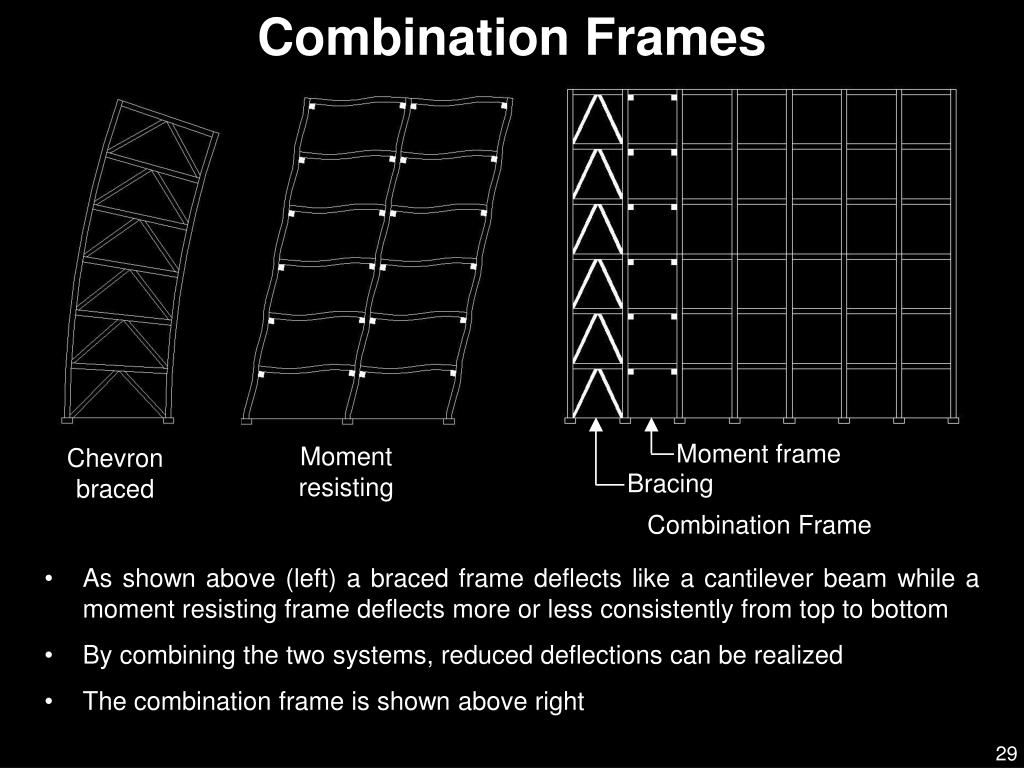
I am actually comparing the values from hand calculation with ETABS, and from what I get in hand cal is about twice I got in ETABS, that's why I raise the question here on the actual behavior to understand whether I had model it wrong or not. you mentioned chevron and inverted V will have unbalanced loading on the beam, but isn't a two-story X frame behaves the same? or do you mean it spans across two levels without connecting to the beam, so effectively the bracing is slightly offset from the building face? Jdgengineer: thanks for your detail reply. Ishvaaag: the screen shot is just part of the structure, it ends with an inverted V instead of a V type bracings Any reason you are avoiding this software? RE: Chevron, Inverted V, X-bracing paddingtongreen (Structural) 1 Dec 11 11:30 Although, a simple SAP or ETABS model would allow you to do alot of these calculations quickly. From what I remember when I had to do virtual work in school, the brace is the only thing contributing to the deflection as all the other connections are designed as pinned (unless you have fixed column bases). I expect the differences in the drift between the three configurations to be minor, although I haven't personally compared them. However, a lot of the time this is not architecturally feasible, and one of the V braces are necessary in order to fit in doors/windows. When given a choice, it's my opinion that the two-story X frame is always the better choice. The two-story X frame does not have this requirement as there are no unbalanced forces on the beam. See AISC 341 for further information, (It's essentially 100% tension force and 30% compression force).

The chevron brace and inverted V will behave similarly, but the beam that the braces meet at will need to be designed for the unbalanced loading from the braces. If you do need to follow these provisions, and you are designing the brace frame as a special concentric braced frame (SCBF), then there are differences between the configurations. This question largely depends on whether or not you need to follow the Seismic Provisions of AISC 341.


 0 kommentar(er)
0 kommentar(er)
